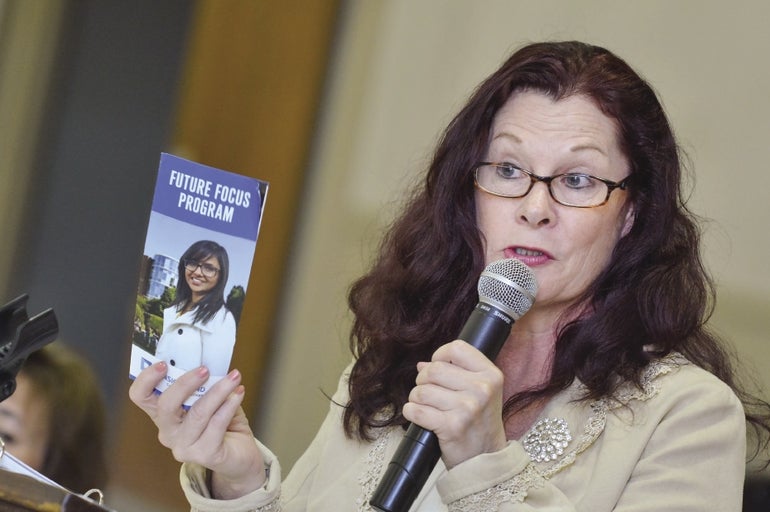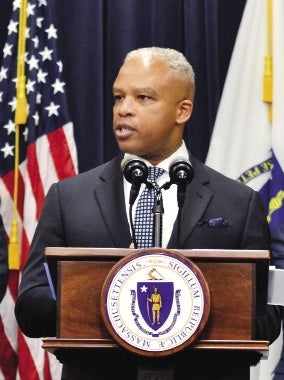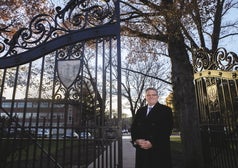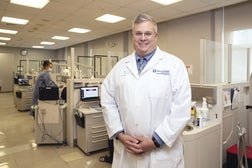Worcester unemployment more complex than one number
At Quinsigamond Community College in Worcester, the college and career navigator, Dawn Kiritsis, runs a workshop for those looking to change careers.
“I say, 'OK, you're interested in this position. How viable is it for you?'” Kiritsis said.
People are matched most often with jobs in the greatest demand, like technology or engineering. It's Kiritsis's job to help those looking for new work no matter how much the economy is humming along.
“There's always going to be a transition because of the fact that we have such a wide range of clients,” she said. “The workplace is so volatile, and it's ever-changing.”
Even as unemployment rates in Worcester (4 percent in March) and across Massachusetts (3.9 percent in April) near their lowest levels in more than 16 years, the real picture of employment is more complex. More than 4,000 Worcester and 150,000 Massachusetts residents are still looking for work, but their skills don't align with needs of companies willing to hire.
“There's a real concern among manufacturers in Central Mass. that they're not finding enough people to fill their needs,” said Christian Reifsteck, director of manufacturing programs at Mount Wachusett Community College in Gardner.
The unemployed
An unemployment rate below 5 percent — it dipped last fall nearly to 3 percent for Worcester and below that statewide — would suggest that nearly everyone who wants to find work has done so. That hasn't been the case.
Only 67 percent of Massachusetts workers are participating in the labor force, according to March data compiled by Alan Clayton-Matthews, public affairs professor at Northeastern University in Boston.
Among the more than 4,000 Worcester residents still looking for work is Benetta Kuffour, who is working at the Workforce Central Career Center on Main Street in Worcester thanks to a state grant. At 67, she said she feels like finding a permanent job is nearly impossible.
“I get burned out by the process,” the former teacher said. “I get tired of sending out a resume with no response. You might go on three interviews a week, and none of them you hear back from.”
Figures beyond the simple unemployment rate show the rate of people working hasn't caught up to where it was before the Great Recession. For certain segments of the population, the rate is that much worse.
Of those without a high school diploma, 42 percent in Massachusetts are in the labor force, Clayton-Matthews found. Of those who did graduate from high school, the rate is still 62 percent. Even among college graduates, 77 percent are participating in the economy.
Clayton-Matthews found participation rates to be lagging for minorities (66 percent working) and those 55 and older (47 percent).
Another Worcester job-seeker, Eddi-Jo Maqui, a single mother of a 6-year-old girl, has struggled to find a job that fits with her parenting and transportation needs.
“There are so many obstacles in the way,” said Maqui, who worked at Home Depot. “We're all up for a challenge, but there's nothing out there.”
Clayton-Matthews estimated about 105,000 people in Massachusetts are underemployed, working part-time because they can't find full-time work. That's down from a peak of about twice that during the height of the recession, but still well above the roughly 70,000 who fit into that category before the recession, he said.
Proper training
One day late last month, Labor Secretary Ronald Walker stopped by Worcester Technical High School for a regional conference on workforce training with representatives from Mount Wachusett and Quinsigamond community colleges and school district leaders. The state has begun setting up such regional meetings to better focus on the particular needs of Central Massachusetts.
“Regional planning is a key part of it,” Walker said of efforts to keep what he called a pipeline of workers toward available jobs.
Like the state labor office and local career centers, community colleges play a role by offering job training for those looking to re-enter the workforce or change job fields.
At Mount Wachusett, those overseeing workforce development have seen high demand for healthcare and manufacturing jobs. Healthcare jobs have grown with an aging population, and manufacturing work more likely includes technical knowledge than in generations past as manufacturing becomes more automated.
“What people don't necessarily realize is that those automated positions are higher-level positions; they pay more, and they require more expertise,” said Reifsteck from Mount Wachusett.
Manufacturing jobs are so in demand that Mount Wachusett has had more than 300 pass through its training program in the past three years. About three-fourths of those got jobs within 90 days.















0 Comments